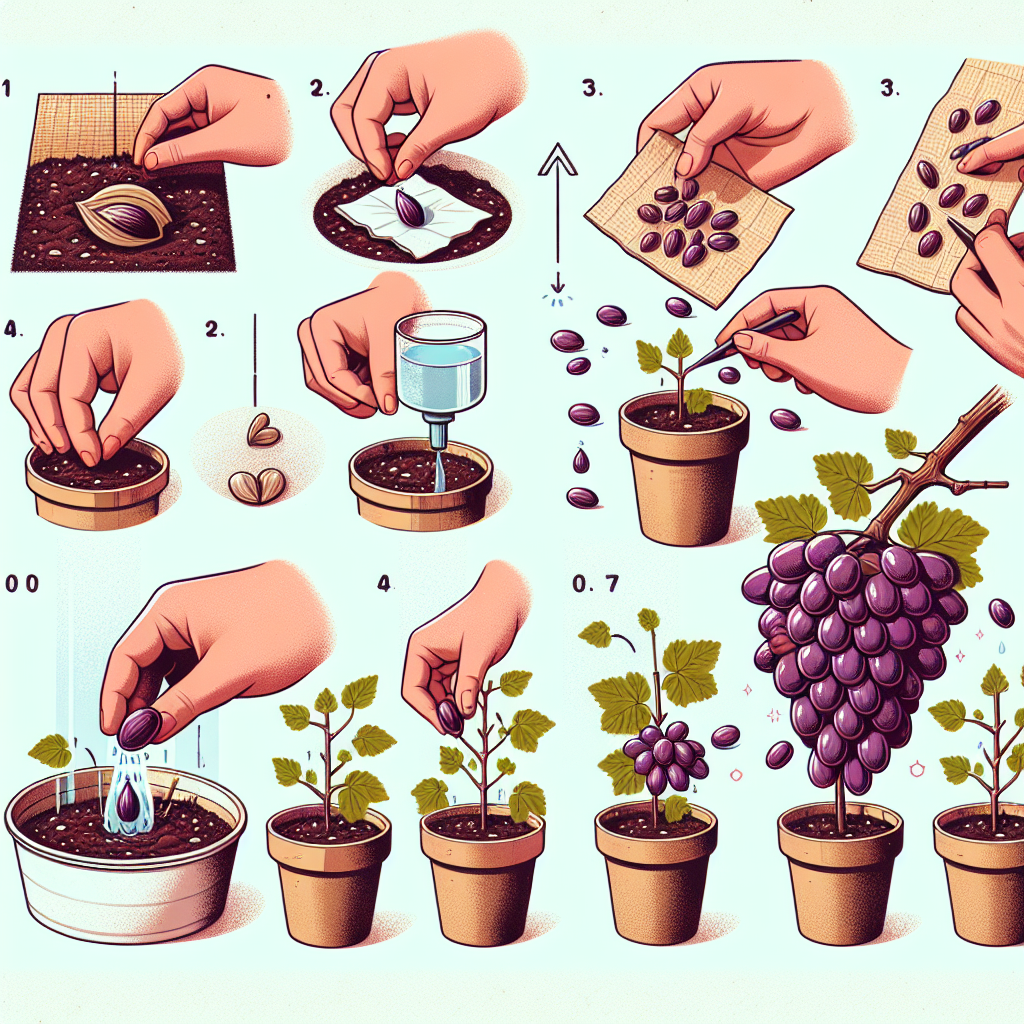
How to grow grapes from grapes
How to Grow Grapes from Grapes: A Beginner's Guide
Growing grapes can be both a rewarding and enjoyable hobby. Whether for wine production, fresh eating, or creating beautiful landscapes, learning how to grow grapes from grapes can help you cultivate your own grapevines successfully. In this guide, we will walk you through the steps of grape propagation, from selecting the right grapes to caring for your new plants.
Understanding Grape Varieties
Before you get started, it's essential to understand that not all grape varieties are suitable for propagation from seeds or cuttings. The wide variety of grapes available includes table grapes, wine grapes, and ornamental vines. Here’s how to choose the right type for your needs:
- Table Grapes: These are sweet and typically enjoyed fresh. Popular varieties include Thompson Seedless and Concord.
- Wine Grapes: Varieties such as Cabernet Sauvignon and Chardonnay are ideal for winemaking.
- Ornamental Vines: These provide beauty and shade but are generally not edible. Examples include Amur and Virginia creepers.
Materials Needed for Propagation
Once you've chosen the variety you wish to grow, gather the materials you'll need:
- Fresh, ripe bunches of grapes
- Potting soil
- Containers or pots
- Plastic wrap or a clear plastic bag
- Rooting hormone (optional)
Step-by-Step Guide: How to Grow Grapes from Grapes
Now, let’s break down the steps on how to grow grapes from grapes into manageable parts. The two primary ways to propagate grapes are from seeds or from cuttings. Each method has its advantages and challenges.
Method 1: Propagating from Seeds
Growing grapes from seeds can be a slower process but can lead to robust plants. Here’s how you can do it:
- Select Grapes: Choose fully ripe grapes, ideally organic, to avoid any pesticides that can affect germination.
- Extract the Seeds: Cut the grapes open and carefully remove the seeds. Rinse them with water to eliminate any pulp residue.
- Dry the Seeds: Place the seeds on a paper towel to dry for a few days. Avoid direct sunlight.
- Stratification: Grapes require cold stratification to germinate. Place the dried seeds in a damp paper towel, seal them in a plastic bag, and refrigerate them for about 30 days.
- Planting: After stratification, fill pots with potting soil, and plant the seeds about an inch deep.
- Watering: Water gently to ensure the soil is moist but not soggy. Cover the pots with plastic wrap to create a greenhouse effect.
- Germination: Place the pots in a warm area with indirect sunlight. Germination can take a few weeks to several months.
- Transplanting: Once seedlings have at least two sets of true leaves, safely transplant them to larger pots.
Method 2: Propagating from Cuttings
Using cuttings is a more popular and quicker method for propagating grapevines. Here’s how to do it:
- Choose Healthy Vines: Select a healthy grapevine and cut a 6-12 inch piece from a ripened stem that has several buds.
- Prepare the Cutting: Trim the bottom of the cutting at a 45-degree angle and remove any leaves.
- Apply Rooting Hormone: (Optional) Dip the cut end in rooting hormone to encourage root development.
- Plant the Cutting: Insert the cutting into a pot filled with potting soil, burying it about 2 inches deep.
- Watering: Water the soil moderately and cover the pot with plastic wrap to maintain humidity.
- Creating a Greenhouse Effect: Place the pot in indirect sunlight and keep the soil moist. The cutting should root in a few weeks.
- Transplanting: When established (after several inches of growth), transplant to a larger pot or directly into the garden.
Caring for Your Newly Grown Grapes
After propagating your grapevines through either method, proper care will ensure healthy, flourishing plants. Follow these care tips:
Watering and Feeding
Grapes require consistent moisture, especially in the early stages of growth. Here’s how to manage watering:
- Initial Watering: Keep the soil consistently damp but not waterlogged. Water about once a week or as needed.
- Fertilizing: Use a balanced fertilizer suited for fruits. Apply during the growing season every 4-6 weeks.
Sunlight and Temperature
Grapevines need plenty of sunlight and warmth:
- Full Sun: Ensure that your plants receive at least 6-8 hours of direct sunlight daily.
- Temperature Preferences: Most grapevines thrive in warmer climates. Be cautious of frost and extreme heat.
Pruning
Regular pruning improves air circulation and encourages growth:
- When to Prune: Late winter or early spring is the best time to trim your vines.
- What to Cut: Remove dead or diseased wood, as well as any overcrowded shoots.
Common Issues and Solutions
As with any plant, grapevines can face challenges. Here are some common issues and their solutions:
Pests and Diseases
- Common Pests: Aphids, spider mites, and grape leafhoppers tend to be problematic. Natural insecticides or insecticidal soap can help.
- Diseases: Fungal diseases, like powdery mildew, can affect grapes. Implement good airflow and avoid overhead watering.
Environmental Factors
- Temperature Stress: Grapes are susceptible to frost damage. Use frost cloths if unexpected cold weather arises.
- Overwatering: Too much moisture can lead to rot. Ensure proper drainage in pots or planting areas.
Harvesting Your Grapes
Once your grapevines develop and mature, the most exciting part comes—harvesting! Follow these tips for the perfect harvest:
- When to Harvest: Grapes should be harvested when they are fully ripe, typically late summer to early fall, depending on the variety.
- How to Harvest: Use sharp scissors or pruning shears to cut the bunches clean off the stem, avoiding damage to the vine or other grapes.
Conclusion
Growing grapes can be a fulfilling endeavor, whether you want them for your wine cellar, dining table, or garden aesthetic. Remember the steps on how to grow grapes from grapes and the vital elements of care, and you'll be on your way to enjoying a bountiful grape harvest. Happy gardening!
By Guest, Published on October 9th, 2024